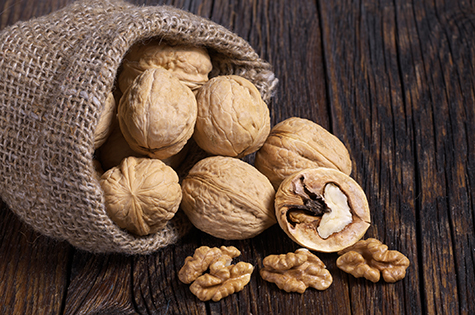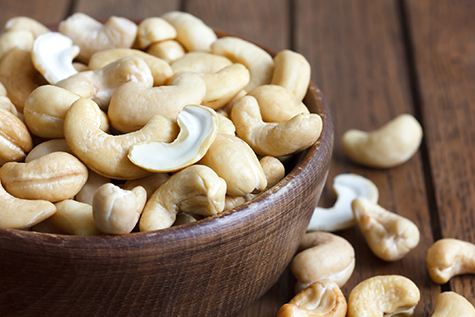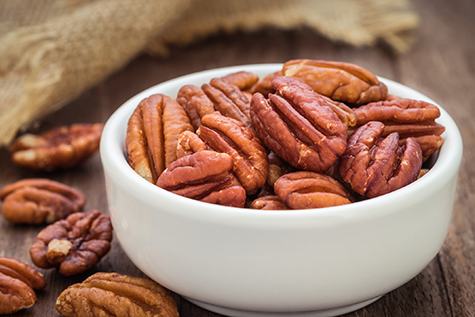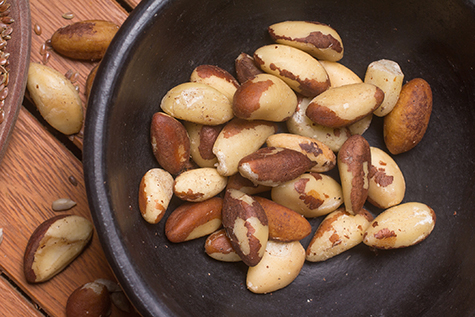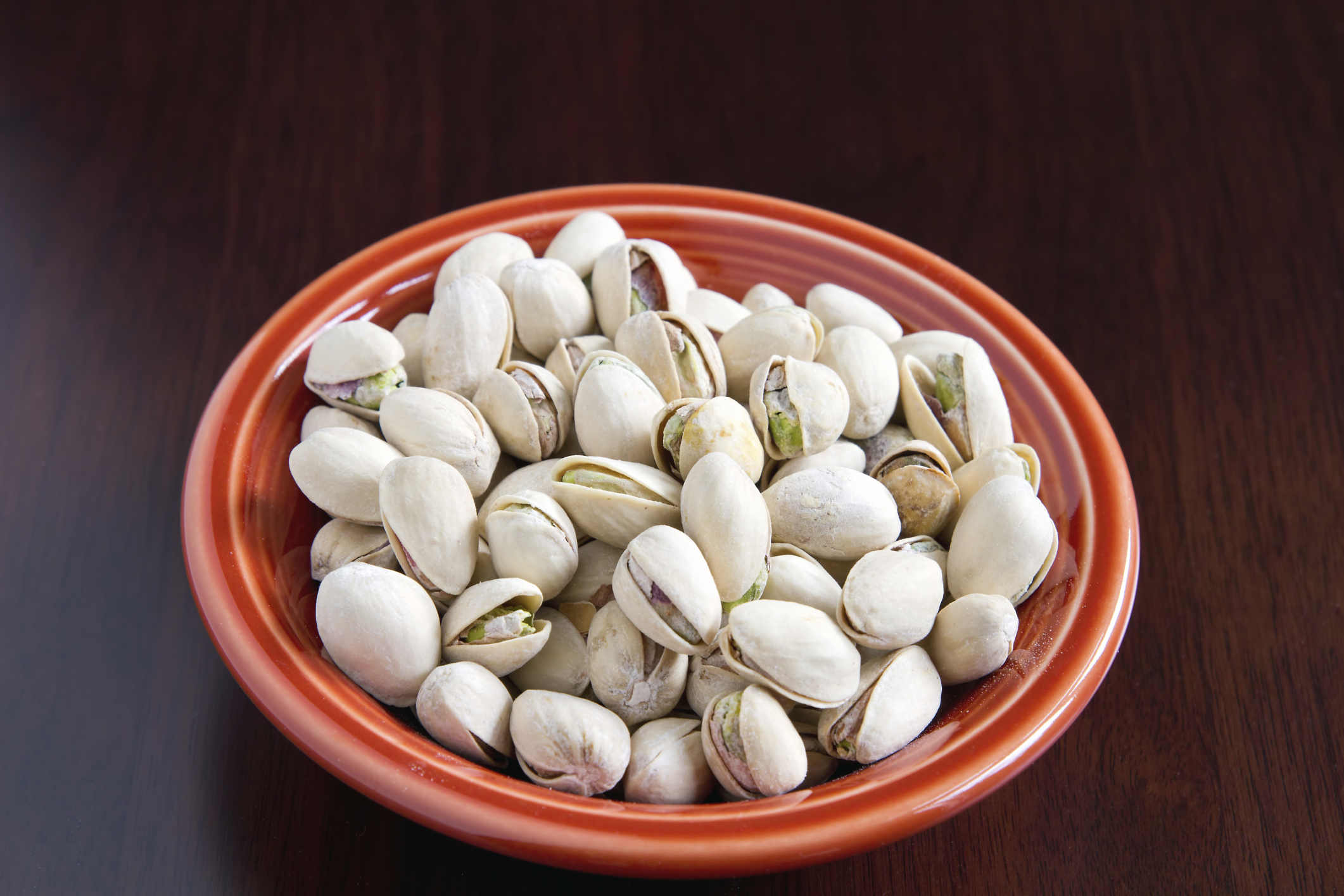Going Nutty! I’ve Got a Crush on Nuts

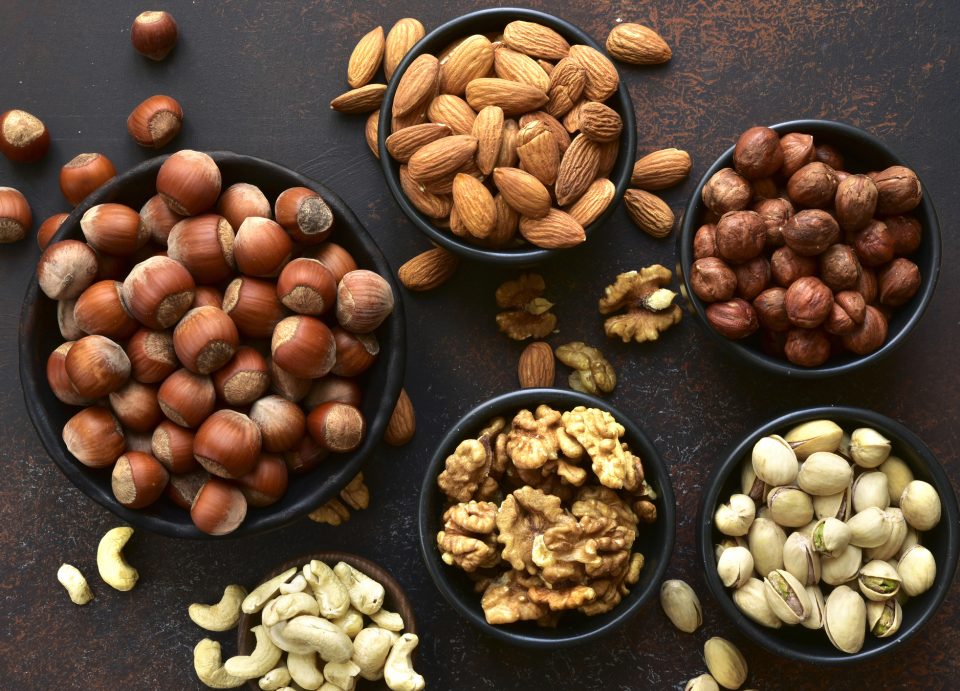
Nuts are full of valuable FoodTrients and they’re so easy to eat as a snack or to add into a huge variety of foods from salads and appetizers to main courses, side dishes and desserts. Nuts are one of the most versatile and healthful foods out there, which is why I have incorporated them into my own diet and included 15 recipes in my new book, The AGE BEAUTIFULLY Cookbook, that feature them.
Nuts are high in fat and calories, but they are nutrient dense, which means they are full of good omega-3 fatty acids, protein, fiber, vitamins and minerals. Just one ounce of nuts delivers many important nutrients. Plus, nuts are highly satisfying and will prevent you from going for a bag of greasy chips with no nutritional value. Here are more reasons that nuts are a great choice for your diet. They’re:
- High in unsaturated fats — Many studies have indicated that the “good” fats in nuts — both monounsaturated and polyunsaturated — lower bad cholesterol (LDL) levels.
- Loaded with Omega-3 fatty acids – Thought to provide a wide range of health benefits, including a lower risk of coronary heart disease and improvement in cholesterol, Omega-3 fatty acids are found in fish, but nuts are one of the best plant-based sources.
- Full of Fiber — All nuts contain fiber, which helps lower cholesterol. Fiber provides a feeling of fullness which helps prevent overeating. Fiber may also play a role in preventing diabetes.
- Rich in vitamin E — Vitamin E may help stop the development of arterial plaques. Plaque development in the arteries can lead to coronary artery disease or a heart attack.
- A good source of L-arginine — Nuts are also a source of l-arginine, a substance that may contribute to making artery walls more flexible and less prone to blood clots.
Raw tree nuts have been associated with lowering cholesterol, improving heart health, aiding in weight control, and even lowering the risk of cancer. Get your ‘nutty’ on and try some! Here are some of my FoodTrients favorites:
Walnuts
contain the most antioxidants of all nuts, which help protect the body from the cellular damage that contributes to heart disease, cancer, and premature aging. They’re also the richest in omega-3 fatty acids, which fights inflammation. Walnuts also contain a good amount of manganese, which may reduce symptoms of PMS. I think you’ll want to try the Walnut and Arugula Salad in The AGE BEAUTIFULLY Cookbook
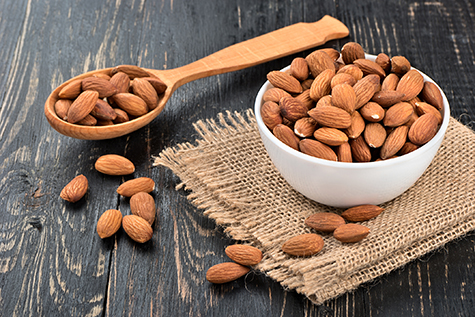 Almonds
Almonds
contain about three grams of fiber per ounce, more than any other nut. They are richest in the powerful antioxidant, vitamin E. Other research shows almonds can lower LDL (‘bad’) cholesterol and decrease insulin resistance. There’s a recipe for Garlicky Green Beans with Almonds of the new cookbook.
Cashews
Just one ounce of cashews provides nearly 25 percent of the daily need for magnesium, which may help memory and protect against age-related memory loss. Cashews are also rich in zinc, which boosts immunity and eye health, as well as iron, which helps deliver oxygen to cells.
Pecans
are rich in antioxidants and may help to prevent plaque from forming in the arteries. They can also lower LDL cholesterol. I serve my recipe for the Pecan and Sun Dried Tomato Tapenade from the new cookbook with my Salmon Poached in Pickling Spices. It will wow your guests.
Brazil Nuts
A single Brazil nut provides more than 100 percent of the daily value for the mineral selenium, which may help prevent certain cancers, including bone, prostate, and breast cancer. There’s a tasty recipe for Brazil Nut Tarts in my first cookbook, The Age Gracefully Cookbook.
Pistachios
Pistachios have the lowest number of calories—less than four each. They also contain potassium which is essential for a healthy nervous system and muscles. Pistachios are also rich in the antioxidant gamma-tocopherol, a form of cancer-fighting vitamin E. They’re also a good source of vitamin B6, which boosts immunity and can help lift your mood. I like to munch on them alone or add them to my FoodTrients version of a trail mix.
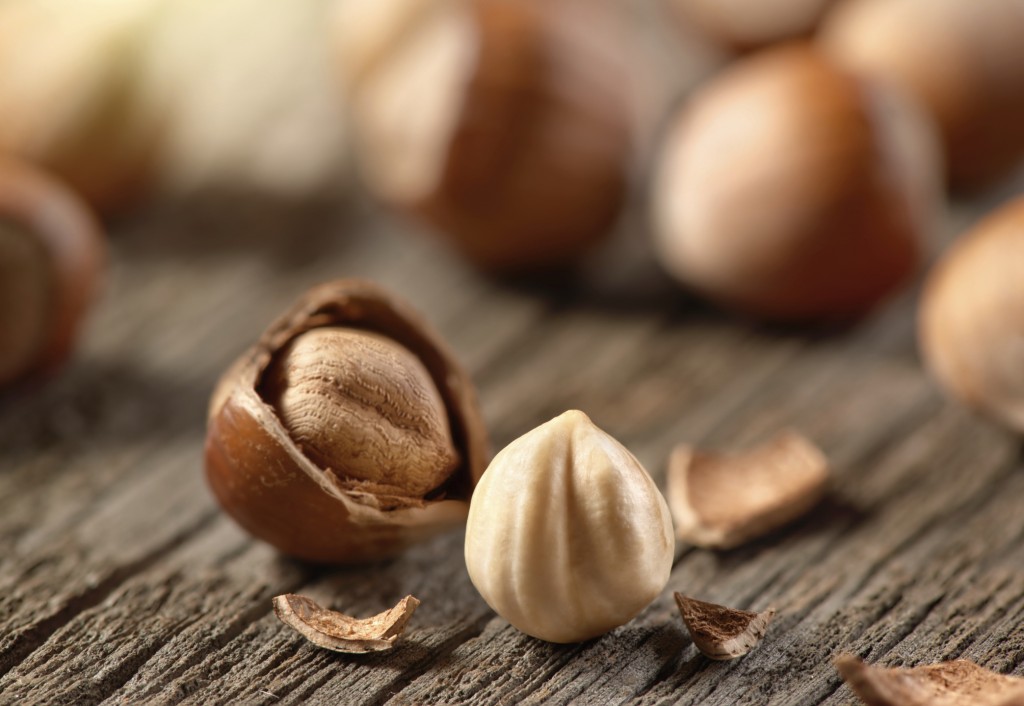
Hazelnuts
Hazelnuts are a good source of monounsaturated fats which can help to prevent type-2 diabetes and improve cardiovascular health. They’re also rich in vitamin E which is good for healthy eyes and skin.
My mother’s favorite nuts were cashews, which she usually enjoyed simply roasted with a little salt. Here’s a recipe from my new cookbook for Kale-Cashew Pesto. I don’t think my mom would have thought to use cashews this way, but she would have loved it! The sweetness of the cashews balances the sharpness of the kale. I use Tuscan kale, which is mild and tender. This pesto is wonderful tossed with pasta, quinoa, on roasted potatoes or spread on a sandwich.
Kale-Cashew Pesto

Kale Cashew Pesto
Yield: I cup
Ingredients
1 cup tightly packed whole Tuscan kale leaves, without stems
2 tsp. salt in a large bowl with water for rinsing
1 cup tightly packed whole basil leaves
½ cup unsalted roasted cashews
5 Tbs. olive oil
1 tsp. crushed garlic
¼ tsp. sea salt
1/8 cup grated Parmesan cheese
Directions
- Rinse the kale in salted water. Drain and dry with paper towels
- Place the kale and remaining ingredients except the cheese and 1 Tbs. of olive oil into a food processor bowl, Blend for 10 seconds or until the mixture is granular but not smooth.
- Scrape down the sides of the bowl; add the cheese and the reserved Tbs. of olive oil. Blend for another 6-10 seconds until it becomes an emerald-colored paste.
FoodTrients:
Antioxidant (AO) – Prevents and repairs oxidative damage to cells caused by free radicals
Disease Prevention (DP) – Reduces risk factors for common degenerative and age-related diseases such as cancer and diabetes.
See all of Grace’s age-dyfing recipes
Starters
Salads
Main Course
Drinks
Desserts
Extras
